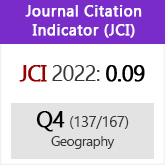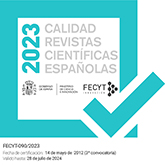Geografía electoral de Chile: comportamiento del electorado chileno entre 1932 y 1992
DOI:
https://doi.org/10.3989/egeogr.1999.i234.557Abstract
The democracy that existed in Chile in a slightly stable way between 1932 and 1973, this last one in which was interrupted, it was featured mainly by the existence of a polypartisan political system, whose mainly political parties were all joined both in the left, center and right wings, received an electoral variable response in time and space, which had about a third part of the preference of the electorate for every of them. After 15 years, in which all type of electoral activity was interrupted, in 1988 a plebiscite was carried out, whose goal was pronounced itself about either the continuity or ending of the prevailing militar system, in a moment when the country became politically polarized. When the electoral conflicts were beginning because of the election of the president of the republic and the parliamentary in 1989, in the same way like the councillors in 1992, it establishes, analysing the obtained results by the political parties that represent the wings said before, that the effect of the electoral recession years have had a poor incidence in the electoral behavior of the Chilean people, i.e., it shows a political tendency towards the recomposition of the traditional third parts.
Downloads
Download data is not yet available.
Downloads
Published
1999-03-30
How to Cite
González Leiva, J. I. (1999). Geografía electoral de Chile: comportamiento del electorado chileno entre 1932 y 1992. Estudios Geográficos, 60(234), 121–138. https://doi.org/10.3989/egeogr.1999.i234.557
Issue
Section
Articles
License
Copyright (c) 2018 Consejo Superior de Investigaciones Científicas (CSIC)

This work is licensed under a Creative Commons Attribution 4.0 International License.
© CSIC. Manuscripts published in both the printed and online versions of this Journal are the property of Consejo Superior de Investigaciones Científicas, and quoting this source is a requirement for any partial or full reproduction.All contents of this electronic edition, except where otherwise noted, are distributed under a “Creative Commons Attribution 4.0 International” (CC BY 4.0) License. You may read here the basic information and the legal text of the license. The indication of the CC BY 4.0 License must be expressly stated in this way when necessary.
Self-archiving in repositories, personal webpages or similar, of any version other than the published by the Editor, is not allowed.















